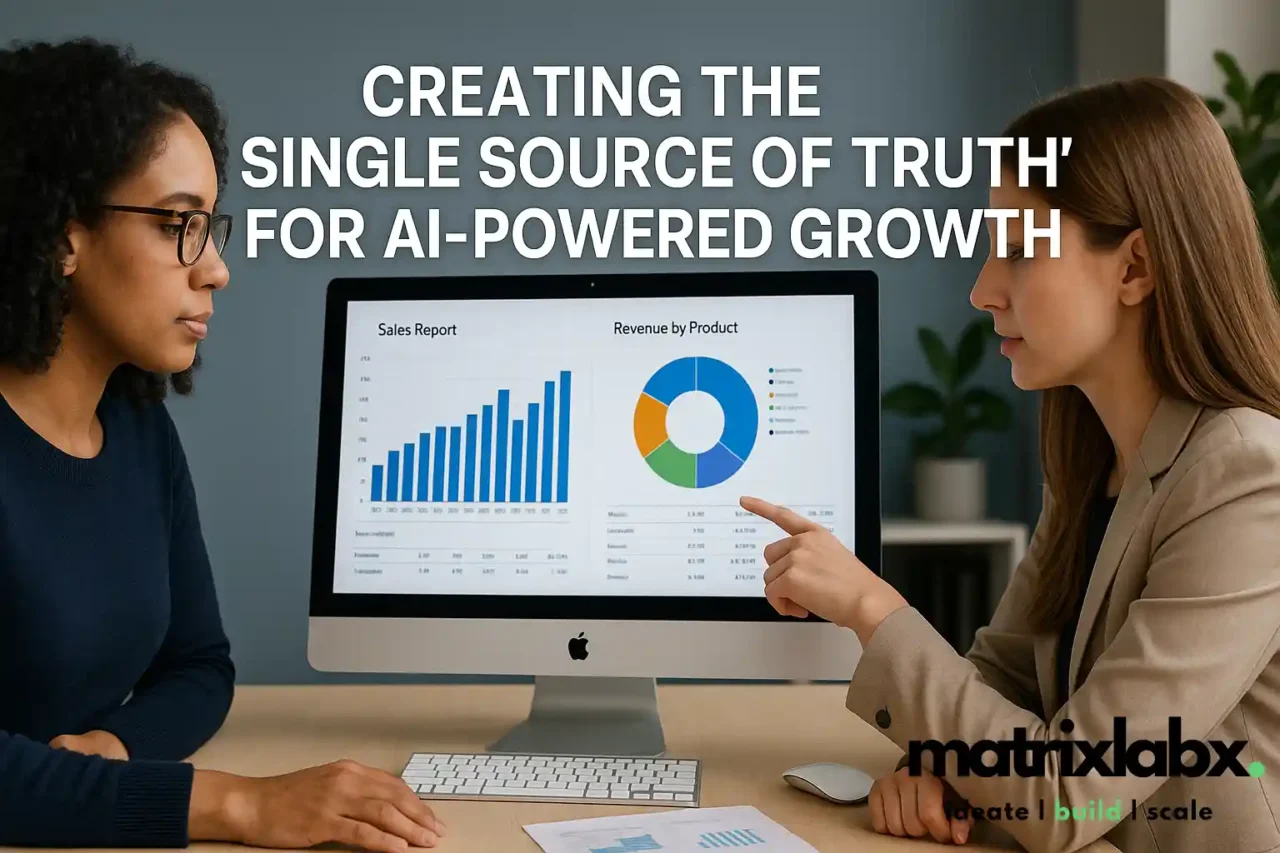Stop Guessing, Start Scaling: The Ultimate Guide to the Technology Client Acquisition Calculator
The Ultimate Guide to the Technology Client Acquisition Calculator
Learn How to Win with the Ultimate Guide to the Technology Client Acquisition Calculator.
In the fast-paced world of technology, growth is the name of the game.
For years, the mantra was “growth at all costs,” a blitzscaling strategy prioritizing market share above all else. But the landscape has matured.
Today’s investors, boards, and leadership teams demand smarter, more sustainable growth. The new mantra? Profitable growth at scale.
This shift leaves critical questions on the table for every SaaS founder, VP of Marketing, and Head of Sales:
- Do you know the true, fully-loaded cost to acquire a new client?
- Can you confidently tell your CFO that you’ll get a predictable return for every dollar you put into marketing?
- Are your sales and marketing teams perfectly aligned on lead volume and quality, or are they operating on different playbooks?
For tech companies—especially those with long sales cycles, high-touch enterprise deals, and a relentless focus on qualified leads—answering these questions with guesswork is a recipe for stalled growth and wasted capital.
This is where a Technology Client Acquisition Calculator becomes one of the most powerful tools in your arsenal. It’s not just a formula; it’s a strategic modeling engine that transforms ambiguity into a clear, data-driven roadmap for success.
This guide will walk you through this indispensable tool’s what, why, how, and who. Matrix Marketing Group | AI Growth Marketing Agency
What is a Technology Client Acquisition Calculator?

At its simplest, Customer Acquisition Cost (CAC) is calculated as Total Sales and marketing Costs divided by the number of New Customers Acquired.
While easy to remember, this formula is dangerously misleading. It’s a lagging indicator that tells you what happened yesterday, not what you must do to succeed tomorrow.
A true Technology Client Acquisition Calculator is a dynamic, multi-stage funnel model that provides a forward-looking view of your entire growth engine.
It moves beyond a simple cost-per-customer metric to illuminate the interconnected mechanics of your go-to-market strategy with a multi-stage funnel model that provides a forward-looking view of your entire growth engine
It’s built by combining inputs from across your revenue funnel to produce actionable intelligence.
Key Inputs the Calculator Requires:
- Top-of-Funnel (ToFU) Marketing Metrics: Total marketing budget (including ad spend, content creation, software, and salaries), website traffic, and visitor-to-lead conversion rates.
- Middle-of-Funnel (MoFU) Qualification Metrics: Lead-to-Marketing-Qualified-Lead (MQL) conversion rates and MQL-to-Sales-Qualified-Lead (SQL) conversion rates.
- Bottom-of-Funnel (BoFU) Sales Metrics: Total sales budget (salaries, commissions, tools like Salesforce or HubSpot), SQL-to-Closed-Won conversion rate.
- Revenue Metrics: Average Annual Contract Value (ACV) or estimated Customer Lifetime Value (LTV).
Key Outputs the Calculator Generates:
- A True, Blended CAC: A precise, fully-loaded cost to acquire a single customer.
- A Complete Funnel Projection: The exact number of SQLs, MQLs, and initial leads required to target a specific customer acquisition.
- Data-Driven Revenue & ROI Forecasting: The projected return on investment based on your ACV/LTV.
- Scenario Modeling shows how improving a single metric (e.g., increasing the MQL-to-SQL conversion rate by 5%) impacts the entire system.
It turns your sales and marketing funnel from a black box into a transparent, predictable machine.
Why This Calculator is Non-Negotiable for Tech Companies
A basic CAC calculation is sufficient for B2C e-commerce or simple transactional businesses.
However, the complexity and stakes are exponentially higher for SaaS platforms, enterprise software providers, and tech startups. Here’s why this calculator is critical.
1. It Bridges the Chasm Between Sales and Marketing
The single most common point of friction in a tech company is the misalignment between marketing and sales.
Marketing celebrates a record number of “leads,” while sales complain about their poor quality. This calculator ends the debate by creating a data-driven Service Level Agreement (SLA).
By working backward from a revenue or new client goal, the calculator dictates the terms:
“To achieve our goal of 20 new enterprise clients this quarter, the sales team must close at a 25% SQL-to-win rate. This means they require 80 SQLs. For marketing to deliver 80 SQLs at their historical 40% MQL-to-SQL conversion rate, they must generate 200 MQLs.”
Suddenly, both teams have the same definition of success. Search Engine Optimization Pricing
Marketing’s Key Performance Indicator (KPI) is no longer “leads,” but “delivering 200 qualified MQLs.” Sales is accountable for converting those MQLs and closing the 80 SQLs. Alignment is achieved through mathematics, not meetings.
2. It Demystifies the Long Enterprise Sales Cycle
When your sales cycle is 6, 9, or even 18 months long, it’s easy to lose sight of how today’s marketing efforts will impact revenue next year. This uncertainty makes planning difficult and can cause panic during “slow” quarters.
The calculator provides a pipeline view that makes the long wait predictable. By tracking the flow of MQLs and SQLs today, you can see the health of your future revenue. This helps you answer critical questions like: “Based on our current MQL generation rate, are we on track to hit our H1 2026 revenue target?” This long-term visibility is invaluable for strategic planning, hiring, and resource allocation.
3. It Equips You to Justify Budgets with Data, Not Hope
Imagine walking into a budget meeting with your CFO.
- The Old Way: “If we increase our content marketing budget, we can get more leads and hopefully close more deals.”
- The New Way: “Our model shows that by investing an additional $50,000 in targeted webinars, we can increase our MQL volume by 15%. This will generate an additional 30 SQLs for the sales team, which, at our current close rate and ACV, will result in 7 new clients and a 4X return on this specific investment within 12 months.”
Which argument is more compelling?
The calculator transforms you from a budget solicitor into a strategic business partner, arming you with the data to make a compelling, numbers-backed case for your proposed initiatives.
How to Use the Calculator: A Step-by-Step Guide
The power of the calculator lies in the quality of its inputs.
The principle of “garbage in, garbage out” is paramount. Here’s how to gather your data and use the tool.
Step 1: Gather Your Marketing & Top-of-Funnel Inputs
First, define a consistent period (e.g., the last quarter or 6 months).
- Total Marketing Spend: This is the fully loaded cost. It includes salaries for the marketing team, ad spend (Google, LinkedIn, etc.), content creation costs (freelancers, agencies), and marketing technology subscriptions (MatrixLabX, etc.).
- Website & Lead Data: Pull this from your analytics and CRM. You’ll need the total number of unique website visitors and raw leads generated (e.g., form fills, demo requests, ebook downloads).
- Calculate Visitor-to-Lead% %: (Total Leads / Total Visitors) * 100
- Calculate Lead-to-MQL%L% %: Clearly define an MQL (Marketing Qualified Lead). An MQL is a lead that has met specific qualification criteria (e.g., right industry, company size, job title, and has shown intent). Calculate this as (Total MQLs / Total Leads) * 100.
Step 2: Gather Your Sales & Bottom-of-Funnel Inputs
- Total Sales Spend: Like marketing, this must be fully loaded. It should include base salaries for SDRs and Account Executives, all paid commissions, and sales technology subscriptions (Salesforce, SalesLoft, etc.).
- Sales Qualification Data (from CRM): You need the number of MQLs accepted by sales and converted into SQLs (Sales Qualified Leads). An SQL is an MQL the sales team has vetted and confirmed is a legitimate, pursuable opportunity.
- Calculate MQL-to-SQL% %: (Total SQLs / Total MQLs) * 100
- Calculate SQL-to-Closed-Won%: This is your sales team’s closing rate. (Total New Clients / Total SQLs) * 100
- Average Contract Value (ACV): What annual revenue do you generate from a new client?
Step 3: Input the Data and Analyze the Core Outputs
With your data in hand, you can now populate the calculator. Once you input the variables, it will instantly generate your core metrics.
You’ll see your blended CAC and, more importantly, the waterfall metric for winning a customer.
For example, you need 4 SQLs, 10 MQLs, and 100 raw leads to get one customer. This clarity is the foundation of your entire growth strategy.
Step 4: Unleash the Strategic Power with Scenario Modeling
This is where the calculator transcends being a reporting tool and becomes a strategic sandbox. Start asking “what if” questions and adjust the inputs to see the impact:
- “What if we invest in sales training and increase our SQL-to-Close rate from 25% to 30%?” The model will instantly show you how that one change lowers your overall CAC and reduces the number of MQLs marketing needs to generate.
- “What if a new marketing channel increases our lead volume by 50%, but the Lead-to-MQL rate drops from 10% to 7%?” The model will tell you if the trade-off between quantity and quality is worth it.
- “What if we launch a new pricing tier that increases our ACV by 20%?” The model will show you how that directly improves your CAC-to-LTV ratio, a key indicator of business health.
By modeling these scenarios, you can decide where to invest your next dollar and your team’s next hour of effort for maximum impact.

Who Needs This Calculator Right Now?
While any business can benefit from understanding its numbers, this tool is mission-critical for specific roles within the tech ecosystem.
- The SaaS Founder / Startup CEO: In the early stages, your job is to find and prove a scalable, profitable go-to-market motion. This calculator is your blueprint. It’s the model you can confidently take to your seed or Series A investors to prove you have a viable business, not just a cool product.
- The VP of Marketing: You are under constant pressure to prove ROI. This tool is your best defense and your most powerful offensive weapon. It allows you to shift the conversation from “costs” to “investments” and directly ties your team’s activities—content, demand generation, product marketing—to the revenue a CEO cares about.
- The VP of Sales: Your world is defined by quotas and forecasts. A calculator built on historical data provides a quick check for setting achievable targets. It also provides the data you need to return to marketing and have a productive conversation about lead quality and volume.
- The Revenue Operations (RevOps) Manager: You are the architect of the growth engine. You are often tasked with building these models from scratch in complex spreadsheets. This calculator standardizes the process, ensures a single source of truth, and frees you up to focus on the strategic insights the data reveals, rather than just its compilation.
Conclusion: From Reactive to Proactive Growth
In today’s competitive technology market, companies that win are not just those with the best products, but those with the most intelligent and efficient growth engines.
Operating without a clear, mathematical understanding of your client acquisition funnel is like flying a plane through clouds without instruments. You might be moving forward, but you have no idea if you’re gaining altitude or headed for a mountain.
The Technology Client Acquisition Calculator is your instrument panel.
It provides the clarity, alignment, and predictability you need to navigate the complexities of long sales cycles and generate qualified leads. It allows you to stop reacting to the past and start proactively designing your future success.
Ready to take control of your growth engine? Access the free Technology Client Acquisition Calculator today and turn your ambitious goals into a mathematical certainty.
Client Acquisition Cost Calculator
Your Current CAC is:
$0.00